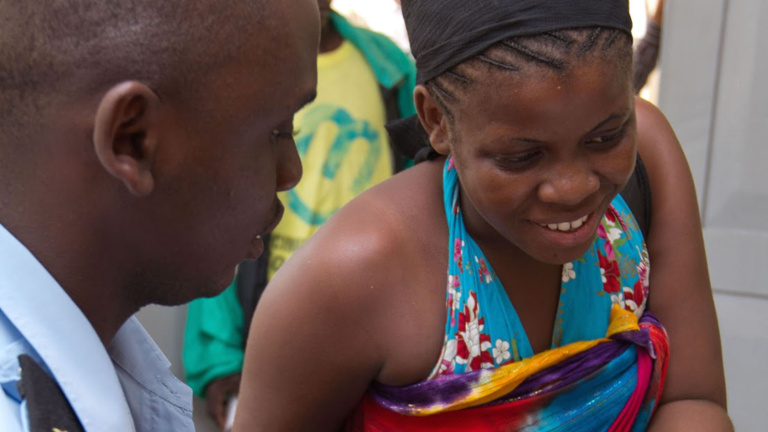
Shift the paradigm, from charity to crypto space
The aid system is not only broke, it’s breaking apart. It is now little more than a humanitarian relief industry. The aid system has failed in its stated goals to save lives and provide basic assistance with dignity to those in crisis at the scale needed.
The broken aid system
This failure is due to a lack of political will and dysfunctional multilateral peace-building structures (Is there still a UN Security Council?). The system is unable to advance beyond the postwar charity narrative driven by a bipolar world, in the continuation of neocolonialist relationships that hold countries and communities hostage, and in the perseverance of unfair trade policies and extraction of resources.
A ridiculously small amount of taxpayer and private donor money (currently some US $25 billion per annum) is not the answer to the emergency needs of the more than hundred million people in crisis at any given moment. Even US $200 billion in overseas development assistance per year could not fix the world, or achieve the Sustainable Development Goals. So something has to be done to avoid the worst; other approaches need to come into play.
Humanitarian aid has not managed to link with what is considered development aid, and development aid has largely failed to enable people and communities to become independent, resilient and responsible for their own lives. Aid has become largely disconnected from the realities of economy and social cohesion too, as it is delivered through disjointed silos. It has often exacerbated dependency and greed. What larger community or region has ever moved away from poverty and desperation thanks to aid? Partial exceptions only emphasise the rule, and the inability to scale up gains to meet the wider challenge. Where poverty has been reduced, the explanation can usually be found in leadership coupled with better governance and investment in services, infrastructure and jobs.
It took more than 1.5 million people making their way to Europe to finally spark a real discussion on what is going on in the world. There is a dawning realisation of what aid cannot do and what it means for hundreds of millions of people to be on the move and for billions to be poor. While nationalist and xenophobic thinking is on the rise, mass migration has provided the shock therapy that wealthy and sluggish Europe needs to begin to rethink itself and reflect on how to fix global challenges. The events of the past three years have exposed an utter failure to receive newcomers with decency and deliver a common policy on asylum and immigration. Europe has failed to deliver on the simplest basics of assistance and protection. Its attempt to pass on and block out the problem of borders is bound to fail, and the resulting deficit of trust among our neighbours will haunt us for generations.
We are blocked by our obsession for categorising humans and adjudicating who has the right to do what: 22 million refugees, 45 million internally displaced people have acquired somewhat of a moral right to move. They have a convention which, though largely disregarded, is still in place. Insecurity, bad and terrible governance, increasingly uninhabitable and overpopulated environments, exploitation, no access to basic services and no hope of change are not considered reason enough for us to grant ‘permission’ for the others to move on. The continuing efforts under the UN Compacts on Migration and Refugees will unfortunately further the divide, as the chance was missed to address “desperate migration” in its entirely and deal with people on the move in a holistic manner for once.
The right to stay
This is a call to shift the paradigm from a current logic of return to a logic of social and economic integration, regardless of the circumstances of displacement. To overcome the reluctance of receiving populations resentful of competition for scarce resources, demographic changes can be used as the trigger for investment in infrastructure and services.
We are blocked by the mantra that displaced people or migrants, especially refugees, should be going back to the place they were displaced from: the idea of the voluntary return ‘home’. The conviction that the “preferred durable solution is voluntary return” and only if all options are exhausted should local integration be pursued is preventing receiving communities from undertaking the right measures to provide services, build infrastructure and ensure economic and social integration.
The idea that return is the best solution is based on the post-WWII human rights architecture, predicated on the urge to reduce incidence of ethnic cleansing and other crimes against humanity through multilateral action. It was also driven by the East-West divide. While this significant and laudable effort was initially driven by the dream of building peace following the horrors of WWII, it has led to the current state of affairs, which leaves millions in limbo for decades while pursuing the ideological goal of recovery of lost rights.
Looking at history, there have always been population movements, most of them hostile or driven by violence. Cities developed as people sought protection and opportunities near a castle, a mosque, a temple or a church. Cities have always been sanctuaries, an expression of multiculturalism and the result of migration. Before the concept of return emerged as the ultimate goal, newcomers were, with difficulties, accepted and became settlers in their new environments. By no means should we accept the tragedy of forced displacement, nor can we spare the perpetrators, but we must place the interests of those most concerned central in our action.
Special development zones and urban development
Imagine if Bangladesh were enabled to develop new special development zones (SDZs), combining settlement, work and multi-stakeholder governance structures. If these provided proper housing, services and employment for its own population in need, then the integration of up to one million Rohingya would not be an issue. They would blend into such a scheme. It is highly unlikely that they will ever return to Myanmar. Are they better off in refugee camps for decades, or as part of a new drive for economic prosperity? Which fate would strengthen their position to recover their rights and dignity?
As a reminder, rising sea levels will force millions of Bangladeshis to relocate away from the coastline. This will not happen without risk of destabilisation. Considerable capital investment will be required for the needed development but could be secured in combination with investment guarantees. New city development throughout the world, from China to Latin America, has had few difficulties in attracting the required resources. Islamic financing sources is one realistic option for building and developing new spaces for 20 to 30 million people in Bangladesh. A win for everyone!
Had Germany relaunched its social and affordable housing development at scale, invested in better care for the elderly and addressed its massive poverty issues, absorption of even more newcomers would have been easier. The economy would be stronger as well. Greece is struggling to cope with 65,000 refugees, as its own economy is suffering. Its small and medium enterprises (SMEs) can’t hire and can’t expand, as there is no liquidity in the market. Refugees have become scapegoats for systemic failure. This same country in 2003 legalised its more than 800,000 undocumented Albanian migrants, as it was strong and dependent on their labour. Financing tools are available, but funding for the municipalities taking the brunt of these demographic changes needs to be enhanced.
The European Union, the development banks but also pension funds and others have a role to play. They should be moving to provide the financing and risk insurance needed, at the right scale to leverage investment for SDZ development and support of municipalities.
Small and medium enterprises
SMEs are the backbone of an economy. They employ 60 to 80 per cent of all private sector labour and generate 60 to 70 per cent of GDP. SMEs are thus key for financial inclusion, development and job creation, as well as for the fast integration of migrants and refugees into host communities.
Healthy SMEs operate with gross margins of 25 to 45 per cent and can therefore afford credit financing. Yet, SMEs tend to be financially underserved. They generally hold little interest for systemic banks, which are reluctant to finance working capital requirements. This is not because the SMEs cannot afford or do not need such credit (evidenced by their gross margins) but for efficiency reasons. Because the transactions are small the management and overhead burden is relatively large. They therefore deliver a smaller margin for the banks than services like derivative trading and infrastructure investment banking.
Creating financing facilities and easy access to finance for SMEs would contribute to society by creating livelihoods as well as tremendously facilitate absorption and integration of newcomers.
The role of tech and digitalisation
The hype surrounding technological developments for tracking refugee movements and providing assistance has now shifted to a far more interesting discussion on how digital and blockchain solutions can help populations on the move leapfrog traditional systems.
Digital banking and mobile finance applications allow anyone to access and transfer money regardless of social and economic status. Loans can be provided based simply on identity. Digital services can reach hitherto inaccessible segments of the world’s population. Combining these with cloud facilities completely disconnected from nation states – such as BITNATION, which seeks to create a Decentralized Autonomous Organization (DAO) allowing for self-governance in the ‘crypto space’ – could bring Utopia closer. Regardless of location and status suddenly everyone can access identity documents, obtain legal support, conduct transactions and other key services.
With all its pitfalls and dangers, global connectivity, networks and digitalisation provide a real chance for a radical shift and more equal sharing of global resources. In this interconnected world the nation state becomes secondary, local communities and municipalities regain their primacy, individuals can make choices to an extent never before possible. Where you live becomes increasingly irrelevant as long as you have connectivity. That current privilege of the smart and wealthy will gradually shift to a broader population and ultimately enhance the ability of the globe’s three billion poor to access services and resources differently. Paradigms must shift. The story of displacement must be rewritten!
About the author
Kilian Kleinschmidt Founder – CEO of IPA | switxboard GmbH Global Networking and Humanitarian Expertise Twitter @KilianK www.switxboard.net
Read the full magazine issue







